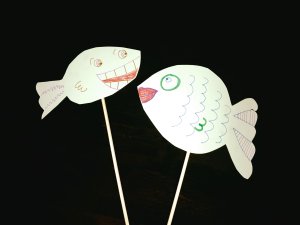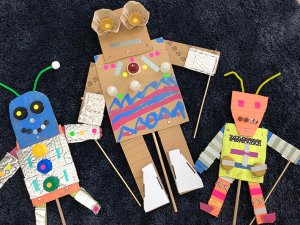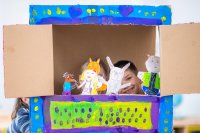5 Home Learning Experiences for the Elementary Grades
Activities that incorporate speaking and listening, reading and writing, math, music, science, art, and drama—and are parent-friendly.
With the announcement of school districts closing across America, most teachers have pivoted to respond to a new reality—face-to-face learning is not currently an option. In the shuffle from traditional schooling to remote learning, many teachers and parents are relying on grade-level or subject-specific packets and online learning. But there are other options.
Although most parents are familiar with the teaching profession, they’re not trained as teachers, so the tasks that teachers share will have to be both doable for students and designed to allow parents to play a supporting role.
The following ideas incorporate speaking and listening, reading and writing, social and emotional learning, math, music, science, art, and drama. My hope is that they inspire parents to set up learning experiences and then follow their kids’ lead. The truth is, there’s no right answer for how to do any of this. There are, instead, many unique and beautiful ways for learning to unfold in this time.

5 Home Learning Experiences
1. Setting up a poetry coffeehouse: A poetry coffeehouse provides an intimate venue for students to read, write, and share poetry. When guiding kids to write poems, it’s important to let them know that rhyming isn’t necessary and that poems can be about anything. Good poem topics can come from the world around the child.
To hold a poetry coffeehouse at home, every member of the family selects a poem—the Poetry Foundation is a great place to look. (Families can instead do this with short stories if they prefer.) Each member practices reading their poem many times over. Parents can help by modeling for children so they hear the pacing, tone, and emotion of the poem.
In preparation for the show, families can create a sign: “Welcome to the ______ Family Poetry Coffeehouse.” To help change the atmosphere, dim the lights and cue up a clip of an audience clapping. Finally, each family member will read their poem aloud—the readings can be streamed live for friends and extended family for a bigger audience.
2. Journaling: Journals, according to Julia Cameron, are companions. Journals are a place for dreams, fears, frustrations, and hopes—a place to reflect on and record regular life. Journals are a portable home for private thought and can be especially therapeutic in troubling times.
With children at home every day, journaling can be a way for children to keep track of the days and how they’re feeling. It often helps for parents to journal at the same time, at least at the beginning. So how can parents start? First, they should find a comfortable place to sit and invite their child or children to watch as they think aloud, “I wonder what I will write about. I could write about what I’m going to make for dinner. Or maybe I’ll write about what I wish I could make for dinner! Yes, that’s what I’ll do.” Then the parent should start writing. From there, parents should encourage children to find their comfortable spot and begin.
Parents should be reminded that journals are private and should not be read unless children give their permission.
3. Composing a song: Joy, happiness, and well-being can be achieved through singing and making music. Creating a song should be a process-oriented, fun experience for all involved. Studies show that creating music and songs aids motivation and helps learners develop a love for language learning.
When I was a child, my family would write songs on long car trips. We chose familiar tunes and, mile by mile, made our own songs. Sometimes we would write them out, but most of the time, we just sang them over and over until they were memorized. When we reached our destination, we would do a presentation of sorts for the people we were meeting and make the obligatory video recording.
This format can be transferred to the Covid-19 living room, and songs can develop and change throughout the course of a day or week. Through song, kids can explore a variety of themes or topics. Long vowel sounds or consonant blends make for perfect song topics. Songs don’t need to be serious—sometimes the funny ones are the best.

4. Putting on a puppet show: Making puppets can be surprisingly appealing in our technologically complex culture. Puppetry invites children and audience members to exercise their imagination, and puppets don’t need to be made from a complicated list of materials—using recycled paper and cardboard, children can create really inventive puppets.
For some added fun, parents can prompt children to create characters, plots, and story lines, or to name all of the shapes they use in their puppet creation. And if they’ve made animal puppets, they can identify the animal’s habitat and other details.
5. Composing alternate endings: When students are actively involved in the conception and construction of literacy experiences, they become more aware of the role they play in their own learning. Crafting alternate endings for stories offers opportunities for students to exercise their ability to see the everyday through a new lens.
To start, one person reads a story aloud, stopping at the climax. Then each member of the family can record—in writing, or with audio or video recording—how they think the story should end. Next, everyone comes together to share their endings.
For added fun, students can act out their endings for the family or hold “interviews” with characters from the story to uncover motives and backstory not shared in the original text.
In all of these, following the child’s lead should be at the center of this learning. If a child is interested in frogs and toads, search online for poetry about them. If a child is fascinated by insects, make a family of puppet insects or write a song about them.
At the end of this pandemic, the goal is for children to have positive emotions and attitudes toward learning. To ensure that, parents need to show that they value kids’ curiosity, individuality, attentiveness, and love of learning.
